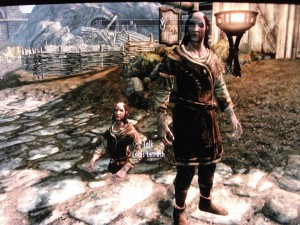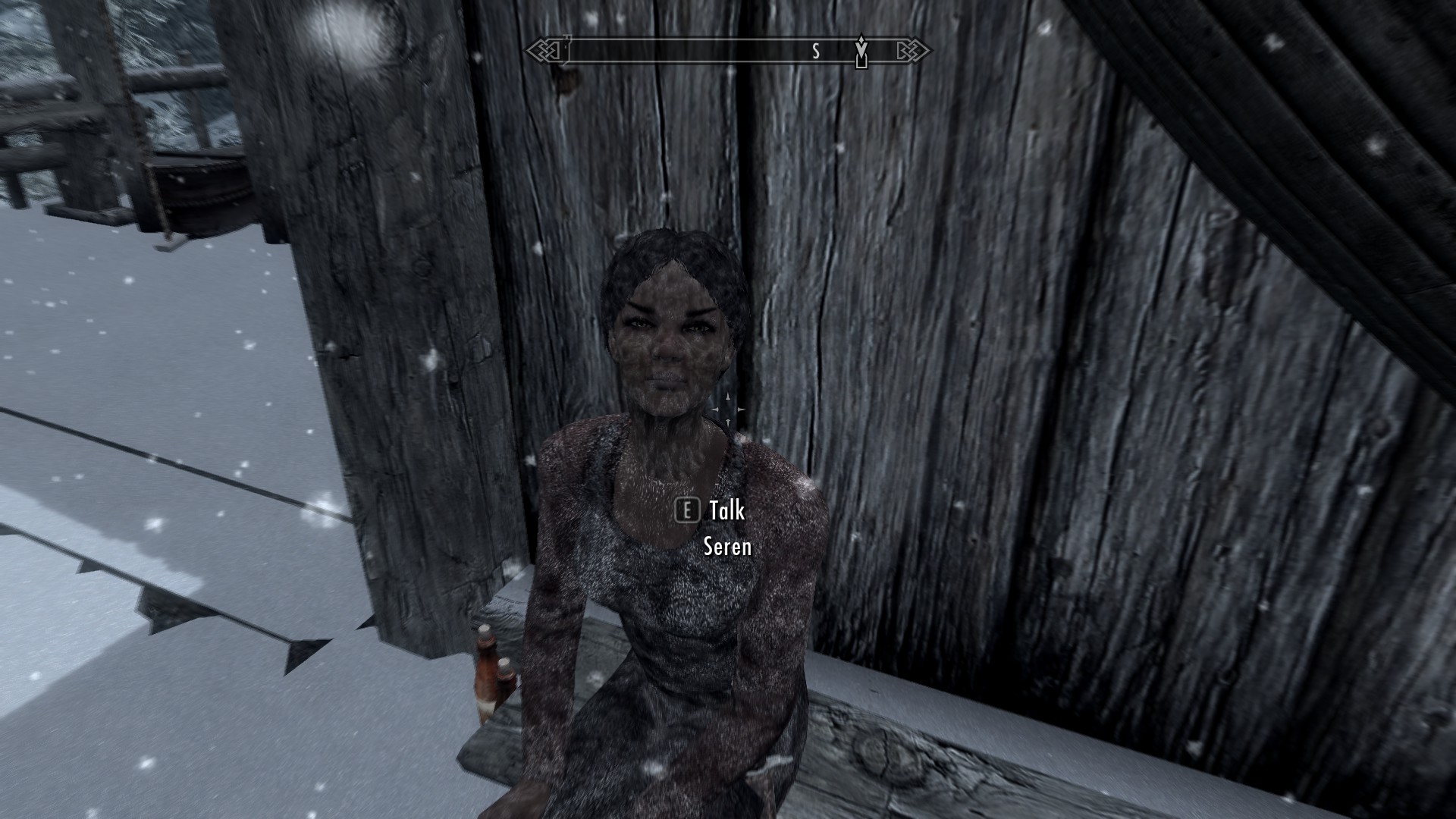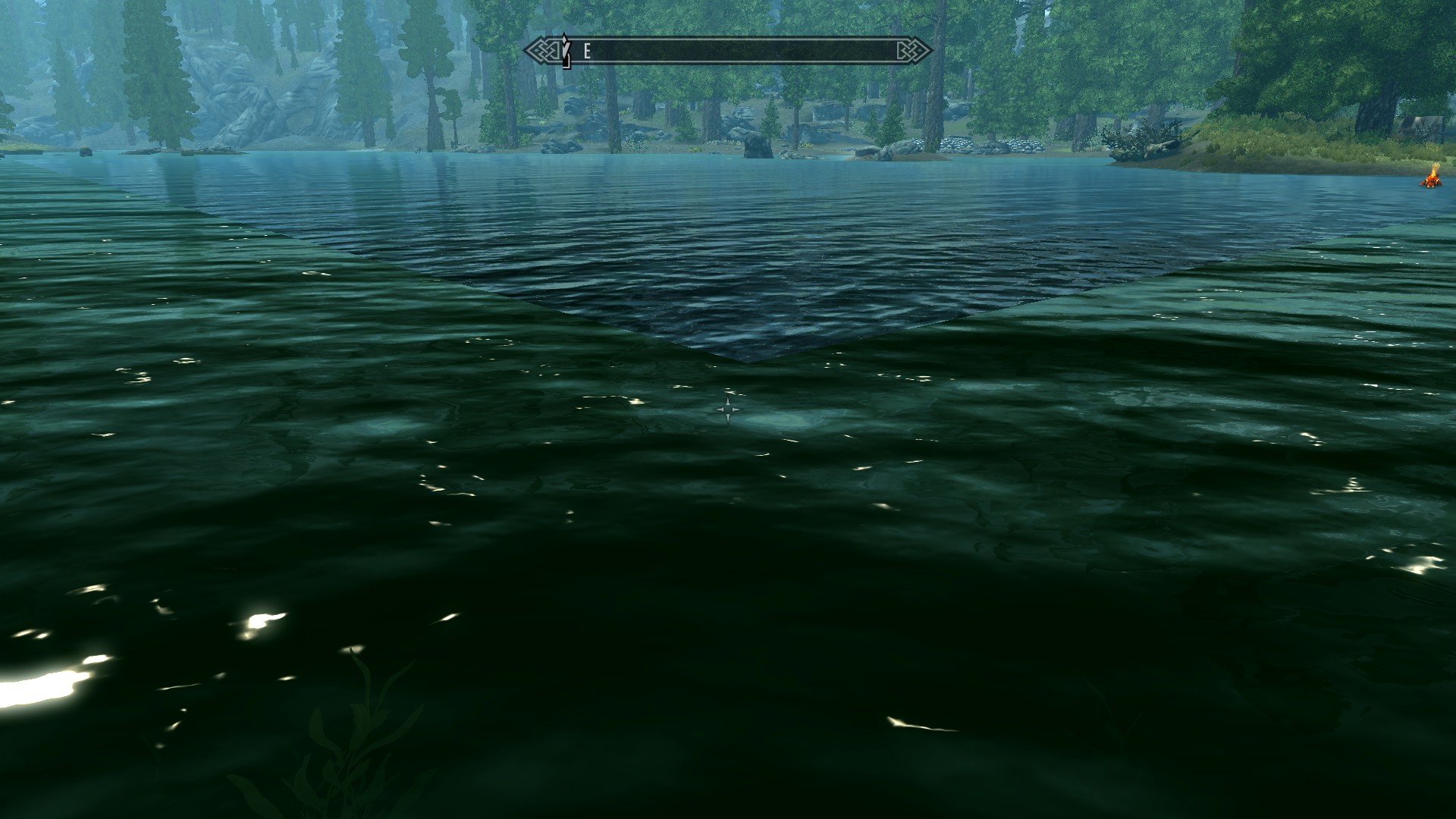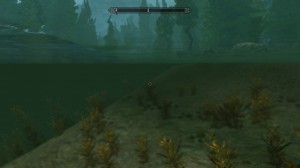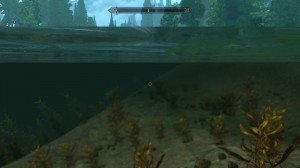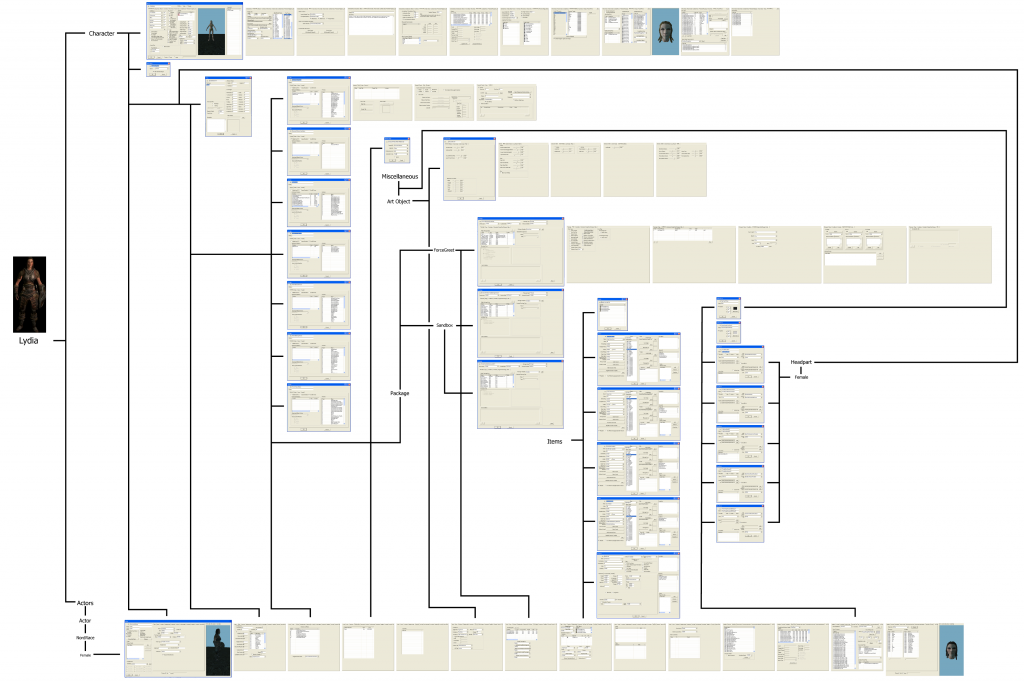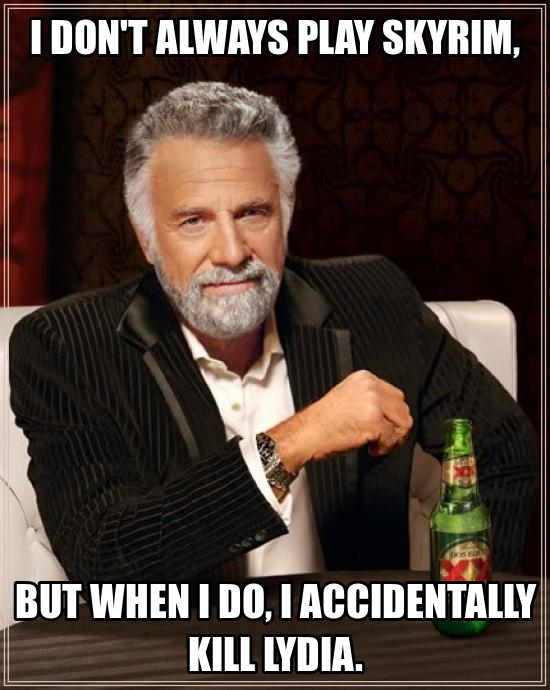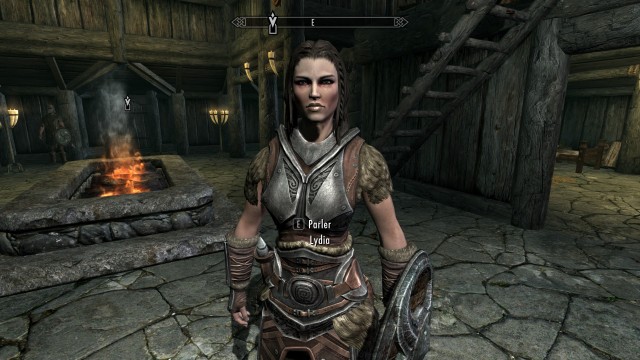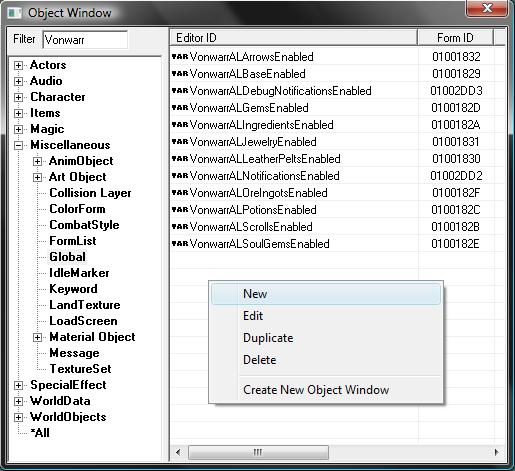The post IMMERSe Postdoc Day rundown, take 2 appeared first on &.
]]>The Postdoc Day IMMERSe event at U Waterloo last week gave me a chance to present in front of and listen to presentations from games scholars doing work all over the network’s six schools. As I mentioned in my last weeknote, the meeting was not something I was originally meant to present at–I was sent mainly to network, listen, and maintain continuity for Concordia’s node. However, an unexpected turn of events brought me to UW toting a presentation to give on behalf of our own postdoc Rob Gallagher, who couldn’t make it. I was a little blindsided by the whole thing–I thought it was going to be a meeting around a table, and when I arrived I learned we were talking in front of an audience in a small theatre. The talk I gave, however, is probably the least interesting thing I can bring back from the event. Anyone who’s read my writing on this site in the past is well versed in the IMMERSe work we’ve been doing over the past year. Instead of rehashing any of that, I’ll write here about the other presentations I heard, as best as I can recall them.
After Neil Randall got up and made some opening remarks about the genesis of the network, the first presentation of the day was delivered by Amanda Phillips, the incoming postdoc at UC Davis. Like me, Amanda has a background in English lit, and the work she’s concentrating on at Davis speaks to that. Their focus seems to be on gender, race, and sexuality in games. The team is interested in games as civic technologies, how they can be used to communicated meaningful themes (currently they’re developing games about fracking, queerness, urban datascapes, and feminist game studies) and as pedagogical social justice tools in the classroom: Phillips herself has led a class on game design that did four weeks reading theory and six weeks building prototypes of games that looked at stuff like nuances of domestic violence (Tethered: two players tethered together in a maze, one of whom can drag and damage the other) and IF on same-sex relationships in an LA urban gangster sort of context (Love like a cholo: a dating simulation). Surprisingly, though it was an English class, the students didn’t need to be taught a lot of the technology (this resonates with the class Darren Wershler taught this spring in which students were expected to play in Minecraft). She’s currently planning a social game jam for the fall (another possible point of overlap with our node and something I need to tell Carolyn Jong about when she gets back in a few weeks).
Besides this work, UC Davis seems to be a great place to go if you want to look at performance studies stuff incorporated with game studies–one project mentioned was data mining Beckett, another was Play the Knave, where you animate theatre using the Kinect–not only acting, but also lighting and staging (all this is based on the Mekanimator technical platform). The node is relying on UC Davis’ many theatre connections, particularly Shakespeare (they have ties to both Stratford and the Folger Shakespeare Library). They’re also doing some work on medievalism in gaming, another obvious point of connection between our two teams, and something that may be of particular interest to Stephen Yeager.
But the most fascinating work seems to be Amanda’s own project, one which takes a deep look at the politics of motion capture and how it impacts facial expression. The racial politics of performance are embedded in all video games, even those that claim to allow you the freedom to make your own character. Phillips noticed that the subjects used to exhibit facial capture technology are often women and people of colour, an observation that led her to Facegen, the 3D modelling middleware by Toronto-based developer Singular Inversions that supplies a lot of the facial modulation stuff in video games, including Elder Scrolls and Fallout titles. Based on Amanda’s research, the sliders you can use to customize your avatar’s face at the beginning of the game are connected to each other in ways that normalize race and gender–so for example, if you slide more towards female and you get more East Asian aspects. The implications of this study are huge and immediately many more questions open up. And obviously, the area of identity performance in TES games is interesting and relevant to us over here, especially Carolyn’s work into gendered bodies in Skyrim mods.
Amanda didn’t miss all these clear connections and potential collaborations either–I gave my presentation right after she gave hers (she wasn’t there physically, but rather telecommuted), and before the rest of the presentations had even finished she sent me an email basically identifying all the same things I’ve elaborated above. It looks like there may be room for our nodes to communicate with each other really effectively and get some cool work done in the coming year.
The post IMMERSe Postdoc Day rundown, take 2 appeared first on &.
]]>The post The Poetry of Patch Notes appeared first on &.
]]>In one of her later essays, Eve Sedgwick (2012) muses ‘sometimes I think the books that affect us most are… the books we know about – from their titles, from reading reviews, or hearing people talk about them – but haven’t, over a period of time, actually read’ (123). Unread, these books can remain ‘objects of speculation, of accumulated reverie’ (ibid.), proving enduringly provocative or inspirational even if what we extrapolate from them is wrong. Sedgwick’s observation, of course, does not apply solely to books – one might, for example, imagine ‘It’s All Over Now, Baby Blue’ to be addressed to a person who’s just overcome some kind of dire tribulation, rather than someone with no options left; Sedgwick herself made hay with the fact that her essay ‘Jane Austen and the Masturbating Girl’ was held up as an exemplar of all that was wrong with literary study not just before its critics had read it but before it had even been written (1994, 15).
As for books, films, songs and essays, so for games: video game titles can be both evocative and deceptive, all the more so because even when we know what a game looks like it is hard to determine how it will feel until the controller is in our hands. Personally, I have always been highly susceptible to the allure of Japanese games with so-called “Engrish” titles – Bulk Slash; Virtual On: Oratorio Tangram; Omega Boost. As Trevor Harrison (2008) argues, “Engrish” is characterized by constructions that might seem bizarre or just comically wrong to the native English speaker, but which are, in many cases, governed by an ‘internal logic’ based on creating unaccustomed and even outright paradoxical syntactical combinations productive of a certain connotative frisson (144-6). Prioritizing feeling, novelty and impact over straightforward sense, this strategy is a good fit for the kinds of visceral spectacle in which the games named above trade.
It is not just games’ titles that speak to us, for this is an industry in which developers and publishers often have recourse to buzz terms, bullet points and neologisms in order to convey how their product works and just what distinguishes it from its rivals. From Shenmue’s ‘quick time events’ to Red Faction‘s ‘Geomod technology’ to Forza 5’s ‘drivatars’ and Battlefield 4’s ‘levolution’ system, video games are in love with unwieldy coinages. A staple of back-of-the-box feature lists, such terms are easily ridiculed, but we might productively see them as constituting an understudied microgenre of game-writing – commercially motivated to be sure, but also a key means of ‘paratextual’ mediation between developer and potential player (Genette, 1997).
Try as they might to entice us, however, such terms ultimately tend to be too vague, not to mention too empty, to truly tantalize. Fortunately there is another kind of gamic paratext that, while tailored to a different (in fact, an almost almost diametrically opposite) purpose, often proves more adept at piquing playerly curiosity: patch notes. Insofar as they list the problems that a particular software update will attempt to fix, cataloguing flaws, conflicts and oversights, these texts should provide a sobering counterpoint to the heady claims made by feature lists. In practice, however ironically, they often afford us intriguing insights into the nature of a game’s operation and appeal.
Skyrim (which title, we might note in passing, wags have suggested better befits a toilet cleaner than a fantasy role-playing game) provides a helpful case in point. The game was released on the eleventh of November 2011 in what was, even for the famously bug-prone Bethesda Softworks, a formidably glitchy state: dragons flew backwards; corpses arbitrarily dematerialized; monsters’ skeletons became lodged in solid walls. By the end of the month the game had been patched to version 1.2, and the patch notes that accompanied this update have since come to be regarded as something of a classic of the genre, exemplifying the power of such texts to synecdochically gesture at the complexities, the forms of emergent spectacle, the proliferating possibilities that made the game so engaging in the first place. Moreover, as Kenneth Goldsmith (2011) would no doubt point out, you only have to remove one line to make the list into an albeit rather unconventional sonnet:
UPDATE 1.2 NOTES (all platforms unless specified)
Improved occasional performance issues resulting from long term play (PlayStation 3)
Fixed issue where textures would not properly upgrade when installed to drive (Xbox 360)
Fixed crash on startup when audio is set to sample rate other than 44100Hz (PC)
Fixed issue where projectiles did not properly fade away
Fixed occasional issue where a guest would arrive to the player’s wedding dead
Dragon corpses now clean up properly
Fixed rare issue where dragons would not attack
Fixed rare NPC sleeping animation bug
Fixed rare issue with dead corpses being cleared up prematurely
Skeleton Key will now work properly if player has no lockpicks in their inventory
Fixed rare issue with renaming enchanted weapons and armor
Fixed rare issue with dragons not properly giving souls after death
ESC button can now be used to exit menus (PC)
Fixed occasional mouse sensitivity issues (PC)
General functionality fixes related to remapping buttons and controls (PC)
Most commentators immediately seized upon the line about dead wedding guests, a teasingly terse clause that might have been custom-engineered to elicit awe, amusement and curiosity. While I had already sunk a good number of hours into the game by the time this text was disseminated, I was not, prior to reading these notes, even aware that it was possible to get married in Skyrim, and was still less able to imagine how the scenario of a corpse arriving at my avatar’s wedding would actually play out (would they be upright? Would there still be flesh on their bones? What differentiated a dead Nord from a living one?). If Bethesda had done an admirable job of hyping the game prior to release (harping particularly on the importance of the ‘radiant storytelling’ system that would generate a literally endless supply of quests) the scenario sketched in this one line arguably gives a much clearer sense of what makes Skyrim special than any developer interview or press release could – indeed, one wonders just how many players, upon reading the notes, purposefully avoided downloading the update in favour of booting up the game and going a-wooing.
I should perhaps make it clear at this point that by drawing attention to patch notes I am not attempting to prop up the by now rather tired argument that glitches have the potential to somehow cut through gaming’s illusionistic patina, putting us in touch with something more ‘real’. Instead, I want to suggest that in the patch note we might find inklings of a mode of writing capable of doing justice to gaming’s virtual dimension (in the properly probabilistic sense), of capturing the way in which players can simultaneously (or almost simultaneously) experience games as captivating fictions, technical achievements and bug-ridden pains in the neck. The rest of the list, while devoid of any single item quite so compelling as the dead guest clause, is interesting and instructive in other respects, and does much to suggest the multifaceted nature of both games and gameplay. Particularly noteworthy are its tellingly coy circumlocutions (PS3 performance issues are not fixed but ‘improved’; Bethesda would struggle to get this version of the game stable over an extended series of updates spanning several months) and its bracingly abrupt switches in register, from metaphysical considerations in one line to banal technical minutiae the next (“Fixed rare issue with dragons not properly giving souls after death /ESC button can now be used to exit menus (PC)”). In this last respect the document resonates with Ian Bogost’s (2012) comments on the list as an ‘ontographic’ technology, a mode whereby a ‘particular configuration [may be] celebrated simply on the basis of its existence’ (38). For Bogost, lists, which are functional first and foremost, offer a salutary corrective to more ‘literary’ modes of description, enjoining attention to specific details, to the fact that ‘no matter how fluidly a system may operate’ it will depend to some degree on the (often uneasy) collaboration of elements that remain, on a fundamental level, ‘utterly isolated [from one another], mutual aliens’ (ibid. 40). In Skyrim’s case we can see how the interoperation of different features and protocols within the game system supported an experience that some found captivating, others ‘broken’ and far from fluid.
As we might imagine, what is true of professional commercial products is also true of mods, with the important difference that the barrier to entry is lower than with full retail games: with no need to pay, owners of the original game have little reason not to download an add-on and see for themselves whether it lives up to the claims made in its maker’s blurb. Skyrim has a particularly active mod scene, one in which the cut-throat competition for downloads and upvotes has bred a discourse rife with inflated promises, unwieldy acronyms (W.A.T.E.R. = Water and Terrain Enhancement Redux), and much loose usage of the term immersive. Again, however, descriptions of bugs and glitches tend to paint a picture that is at once more reflective of the actual experience on offer and more capable of supporting speculation, fantasy and projection. It is not uncommon for modders to admit that they have no idea why users are experiencing particular problems, and such admissions – which are, in some cases, very detailed and frank – offer glimpses into the logical guts of the game that can be as dizzying as any polygonal vista. I leave you with some snatches from modder Araanlm’s notes on his Here There be Monsters mod, notes I find both cryptic and strangely romantic: “Somehow in doing this I managed to mess up the original location of Jormungandr, which was just north of Northwatch Keep. I moved him to a different island north of Orphan’s Tear, but the original location is still messed up and causes a crash to desktop… I’m not sure if the monsters can actually use [summoning spells] since they are not human NPCs.”
Araanlm (2013). Here There be Monsters. Steam Workshop. http://steamcommunity.com/sharedfiles/filedetails/?id=81166964
Betheda Blog (2011, November 30). Skyrim 1.2 Update. http://www.bethblog.com/2011/11/30/skyrim-1-2-update/
Bogost, Ian (2012). Alien Phenomenology, or, What its like to be a Thing. Minneapolis: University of Minnesota Press.
Genette, Gerard (1997). Paratexts: Thresholds of Interpretation. Cambridge: Cambridge University Press.
Goldsmith, Kenneth (2011). Uncreative Writing: Managing Language in the Digital Age. New York: Columbia University Press.
Harrison, Trevor (2008). 21st Century Japan: Anew Sun Rising. London: Black Rose Books.
Sedgwick, Eve Kosofsky (1994). Tendencies. Durham NC: Duke University Press
– (2012). The Weather in Proust. Durham, NC: Duke University Press.
The post The Poetry of Patch Notes appeared first on &.
]]>The post Disruptive Mods and Skyrim appeared first on &.
]]>As part of the IMMERSe research I’m currently involved in, our team has been spending time lately examining mods for the Bethesda Elder Scrolls game Skyrim. Mods are (generally) user generated content for commercially produced and distributed games, and can alter anything from the realism of how light reflects off of surfaces in the game to building whole new environments for players to explore and missions for players to complete. Our primary focus has been on immersive, narrative mods that significantly effect the story aspects of the game, but one particular point of interest I’ve developed over the last couple months has been when mods fail, or at least appear to fail in their intended, stated goal. In the interest of seeing what happens when mods break themselves, break each other, or break gameplay, I enlisted some colleagues and went about trying to see how we could use mods to fuck up Skyrim.
It wasn’t hard to screw up our Skyrim play. We used a very simple methodology–throw a whole bunch of mods on the game at once and see what happens. We installed and ran multiple aesthetic mods: dozens of patches designed to add richer textures, more realistic dust in the air, detailed sound effects, and so on. Also installed were large narrative mods like the Falskaar pack (which gives a player an additional 25 hours of playable missions and adds a new map to the game about a third of the size of Skyrim itself) and other interactive mods that alter the way the player interfaces with the environment. The hope in running all these mods at once is that one mod gets in the way of another in a really interesting way, and that the player consequently gets a chance to learn about how the game functions or see it from a new perspective (another hope might be that all these mods just overload the computer’s brain, but we were playing on a really powerful machine). As I said, this wasn’t hard to achieve. Turning on the Falskaar map and mission pack, we set about to try some new adventures, but some of the survival mods we’d installed got in the way of us going about our business. Survival mods effect your ability to deal with the elements, so swimming is a bad idea–your stamina will fall away, your vision will blur, and eventually bone chill will set in. Unfortunately, all the traditional ways to warm yourself up and dry yourself off have been disabled by some other mod, so you’re at a loss for what to do. We eventually found an indoor fire that built our player’s stamina, but by then we’d wasted about twenty minutes. Meanwhile, our cold weather mod was giving all of the Falskaar NPCs frostbite. We decided to head back to Skyrim proper before anyone died of exposure.
An effect of our Cold and Wet mod in Falskaar. This woman is not supposed to look like this.
One of the problems with using so many mods at once was that is was sometimes hard to tell which mods were glitching. One audio mod forces the player to turn her head in order to hear any dialogue (though effects, music, and ambient sounds are always audible). The strange algorithmic logic of such a mod–ears are on the side of the head and necessary for hearing, so obviously you want to point your ears toward the source of sound–are reminiscent of some of the AAA games of the last decade, where turning or walking away from the source of sound turned the volume on it way down. However, larger immersive Skyrim mods such as Falskaar also include dialogue recorded by amateur voice actors, often in their homes or some other locale lacking the benefit of soundproofing. The final result is that the player turns her head to hear dialogue from a barmaid who sounds like an American teenager doing a bad British accent with a dishwasher running in the background. These sounds aren’t so much non-diegetic as they are acousmatic–it’s impossible to tell just where the sounds are coming from, or if they’re meant to be in the world or not, a question raised by the fact that the player’s modded character is apparently hard of hearing when it comes to human voices.
Then there were the mods that changed the look of the environment. Now these were interesting. I had hoped that by running multiple mods designed to affect the same game elements, we might get to see a total breakdown of the game’s visual interface processes. We ran two water mods at the same time, and I hoped that when we approached a lake we would observe a pixelated flickering mess as the two mods fought for control over what the player saw. Instead, they just cooperated and cut the lake right in half. Sections of the water were green, others were blue, and the areas were separated by nice clean lines and right angles. Even underwater a flick to the right would change the opaqueness and tinting of the view, while up above an invisible boundary marked the difference between ebb and flow and the waters rippled in opposite directions. Meanwhile, multiple tree mods had an easy time getting along too–some would exist in the same space (making for interesting topiary arrangements), while others were sometimes pushed up out of the ground–not to fall over, but rather to float overhead, suspended in the air.
Two waters mods getting along swimmingly, while my flaming horse (also a mod) paddles through with undampened spirits.
Water mods just a bit to the left or right.
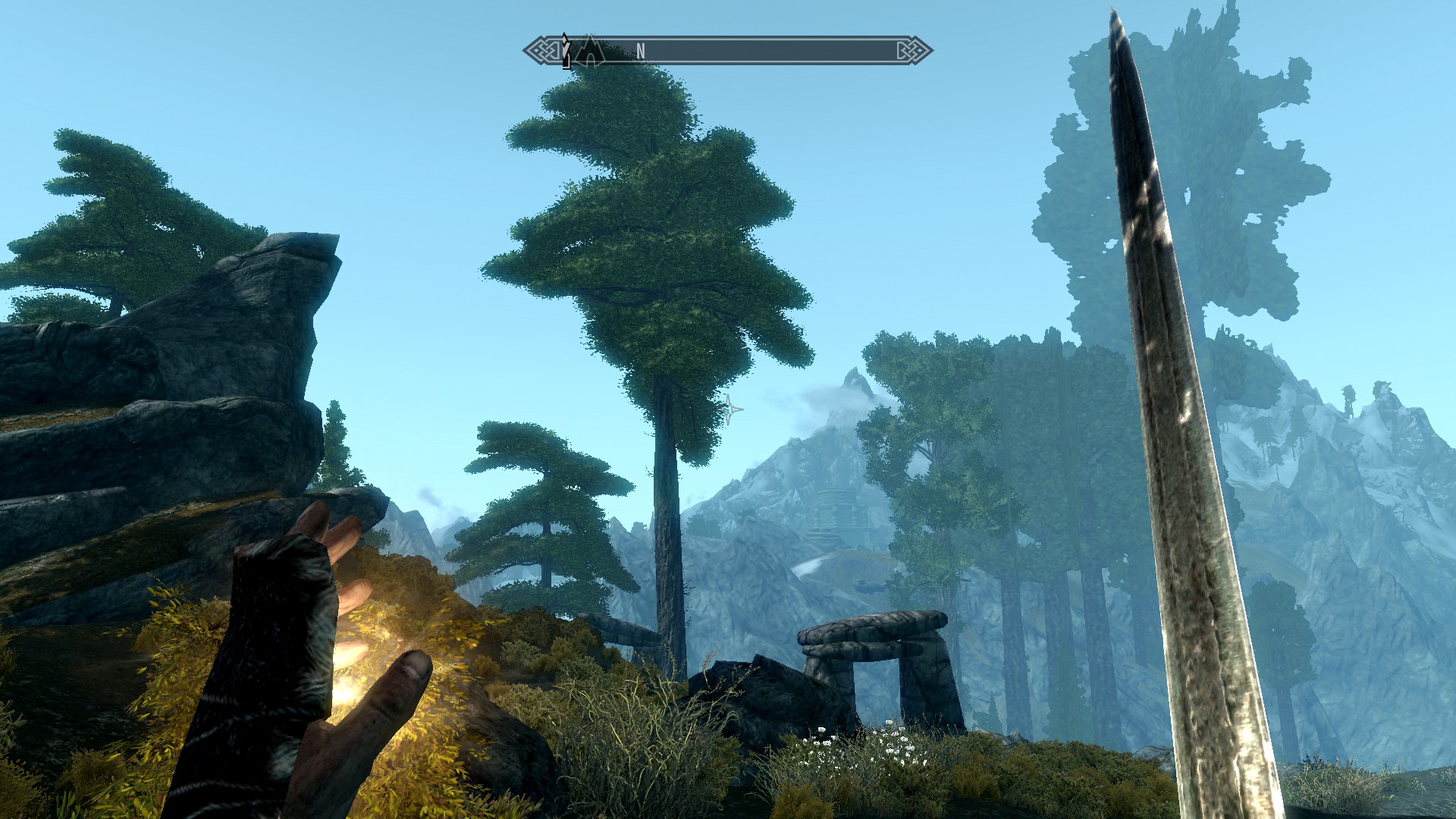 While some multiply-modded trees glitched out visually…
While some multiply-modded trees glitched out visually…
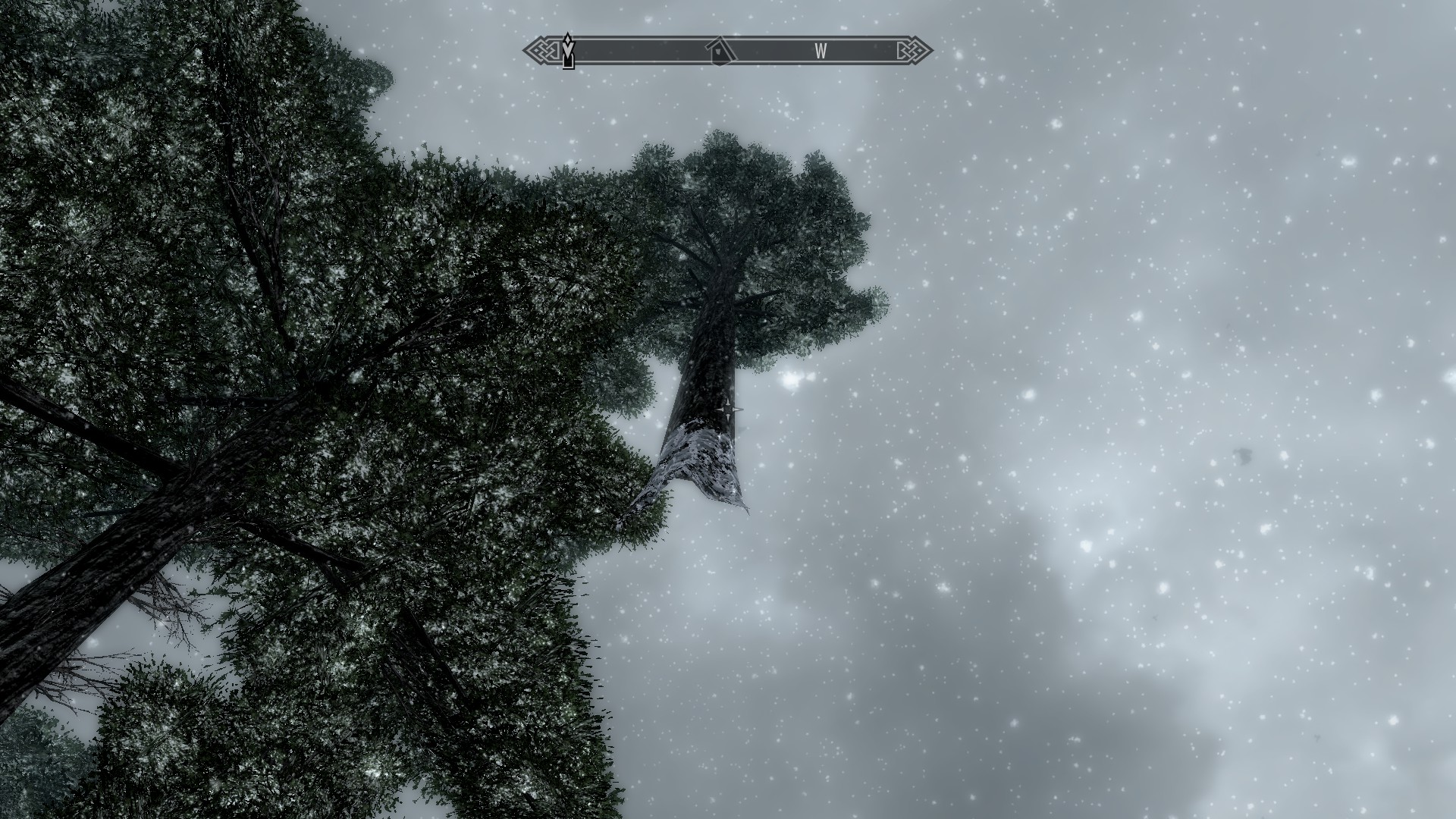 …others were altered spacially.
…others were altered spacially.
These kinds of mod glitches shed new light on the software processes of the game. Rather than seizing up or prioritizing one mod over the other, the system has opted to resolve the conflict in what it thinks of as an equitable fashion. While we generally think of a game as incapable of breaking its own rules, Skyrim here has dealt with an informational surplus by simply incorporating all options. At least, that’s how it works out visually.
The explicitly iterated point of almost all of these mods is to create a richer immersive fictional environment for players. What’s unstated in this equation is that they are also there as the material evidence of the training process of mod creation–modders make their art not only because they saw something lacking in the environmental effects of the game, but also to see if improvements could be made, as a way to pass the time, for the “egoboo” that comes with anonymous or pseudonymous online achievements, or just for fun. This is all besides the point: what they invariably claim to be doing is enriching gameplay through software manipulation. In the event of a mod glitch, then, we might want to say that the modder has failed: where they say they want to make the game world more immersive and absorbing, what their mods have actually done is disrupt. Certainly there’s nothing so distracting to the experience of gameplay as pixels jarringly out of place or overly detailed texture lag slowing play down to a crawl. Even when two mods sit alongside each other more or less harmoniously, the player is taken out of the game to think about the non-diegetic aspects of the game.
I want to suggest here that this is exactly the strength of the mod glitch. Here “playing” the game can be replaced by “playing with” the game, and immersive exploration becomes about acutely noticing the points of fascination in the game world rather than using the mods to be able to pretend the environment is real enough to be seamless. Why should our experience of games strive at realism? Why do we go so far out of our way to make most of what constitutes the game (hardware, software, programming) invisible?
At the very least, these glitches reinforce a kind of hermeneutics of suspicion about the game. The slippages represented by these glitching mods can function pleasurably in much the same way as a film’s continuity errors or diegesis-breaking production “goofs.” Just as bits of film trivia are known only by and kept only for cinephiles, these mod overloads are passed around and enjoyed by lovers of Skyrim–only those players who enjoy the game enough to build, seek out, or use mods for the game will bear witness to these technological failures or mistakes.
The post Disruptive Mods and Skyrim appeared first on &.
]]>The post Boot Camp: Disassembling Lydia appeared first on &.
]]>This is Lydia. Lydia is a character in the digital fantasy role-playing game The Elder Scrolls V: Skyrim. Fictionally, Lydia is a Housecarl, someone sworn to serve and protect the Thane, an honorary title granted by the reigning lord to a person of importance in a city or Hold. She is one of many followers that players can “obtain” in the realm of Skyrim. Followers will literally follow player characters around, fighting hostile enemies, carrying equipment and items, getting stuck behind various obstacles, falling off cliffs, and running into the player’s line of fire whenever she tries to attack.
Lydia in particular is known for such unenthusiastic remarks as “I am sworn to carry your burdens” (a reply to the player’s request to trade items) and “I have never seen anything quite like that.” As one of Skyrim’s most famous and beloved/hated characters, she has been the subject of many a tale of adventure, heartache, and loss, as well as numerous live-action videos, and even a song or two.
For all the countless hours players have spent with Lydia by their side, most are unlikely to see her in quite the way I have laid out here. This is a pieced-together view of Lydia from inside the Creation Kit, the software Bethesda used to build Skyrim. The Creation Kit was made available to all players with a copy of Skyrim (and Windows) in early 2012, and can be used to create Skyrim mods (modifications that add to or alter the game).
The image is composed of cropped screenshots, which were taken in the Creation Kit and pasted into GIMP (GNU Image Manipulation Program). The lines show the relationship between the windows (which represent objects) and the various categories and references that are used to sort content in the Creation Kit. While the Kit’s object window displays data in the form of a tree (see below), many of the windows also contain data entry fields that refer to other objects, creating a network of interdependencies. I’ve drawn out some of these connections in part because I think they help to demonstrate the extent to which tree diagrams hide or abstract out the messy connections that are almost inevitable in a game as complex and convoluted as Skyrim is.
In effect this represents only a small portion of all the information that is required to create a character like Lydia. On top of that is all the data that players have added to the Lydia-assemblage in the two years since the game’s release (and possibly even before that), some of which I’ve linked to above. If we consider that Skyrim has hundreds of NPCs, not to mention all the other components of the game, we can begin to get a sense of just how much labour was required to construct something of this scale—and it’s far from over. The game is being replayed and remade, narrativized and modified, each and every day; it is a living, breathing, growing and decaying thing. While this makes it all but impossible to represent each aspect of it at the level of detail I’ve included here, these micro-views may still help us to identify or explain patterns that would be difficult to decipher otherwise. If the code is the DNA, think of this as a diagram of the cellular structure of one part of one cell in a massive redwood tree. It’s scary, but also beautiful, in an awe-inspiring sort of way.
The post Boot Camp: Disassembling Lydia appeared first on &.
]]>